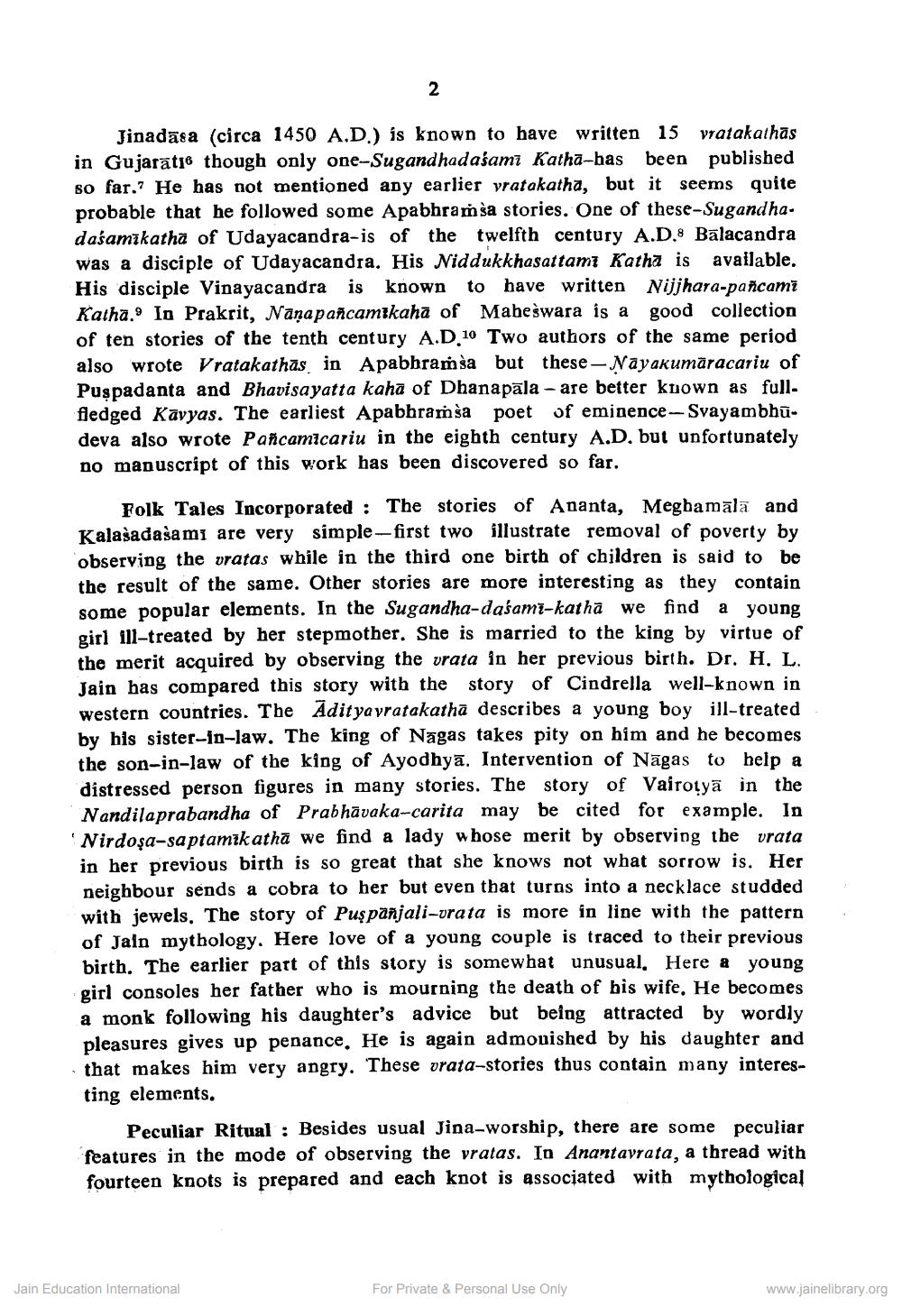________________
Jinadāsa (circa 1450 A.D.) is known to have written 15 vratakathas in Gujaratie though only one-Sugandhadaśami Katha-has been published so far." He has not mentioned any earlier yratakatha, but it seems quite probable that he followed some Apabhraíša stories. One of these-Sugandha. daśamikatha of Udayacandra-is of the twelfth century A.D.8 Balacandra was a disciple of Udayacandra. His Niddukkhasattami Katha is available. His disciple Vinayacandra is known to have written Nijjhara-pancami Katha.9 In Prakrit, Nanapancamikahā of Maheswara is a good collection of ten stories of the tenth century A.D. 10 Two authors of the same period also wrote Vratakathās in Apabbramsa but these - Nayakumaracariu of Puşpadanta and Bhavisayatta kaha of Dhanapala - are better known as fullfledged Kavyas. The earliest Apabhramsa poet of eminence-Svayambhūdeva also wrote Pañcamicariu in the eighth century A.D. but unfortunately no manuscript of this work has been discovered so far.
Folk Tales Incorporated : The stories of Ananta, Meghamālā and Kalasadašami are very simple--first two illustrate removal of poverty by observing the vratas while in the third one birth of children is said to be the result of the same. Other stories are more interesting as they contain some popular elements. In the Sugandha-daśami-katha we find a young girl ill-treated by her stepmother. She is married to the king by virtue of the merit acquired by observing the vrata in her previous birth. Dr. H. L. Jain has compared this story with the story of Cindrella well-known in western countries. The Adityayratakatha describes a young boy ill-treated by his sister-in-law. The king of Nāgas takes pity on him and he becomes the son-in-law of the king of Ayodhyā. Intervention of Nāgas to help a distressed person figures in many stories. The story of Vairotyā in the Nandila prabandha of Prabhāvaka-carita may be cited for example. In Nirdoşa-saptamikatha we find a lady whose merit by observing the vrata in her previous birth is so great that she knows not what sorrow is. Her neighbour sends a cobra to her but even that turns into a necklace studded with jewels. The story of Puş panjali-vrata is more in line with the pattern of Jain mythology. Here love of a young couple is traced to their previous birth. The earlier part of this story is somewhat unusual, Here a young girl consoles her father who is mourning the death of his wife. He becomes a monk following his daughter's advice but being attracted by wordly pleasures gives up penance. He is again admonished by his daughter and that makes him very angry. These vrata-stories thus contain many interesting elements.
Peculiar Ritual : Besides usual Jina-worship, there are some peculiar features in the mode of observing the vratas. In Anantavrata, a thread with fourteen knots is prepared and each knot is associated with mythological
Jain Education International
For Private & Personal Use Only
www.jainelibrary.org




